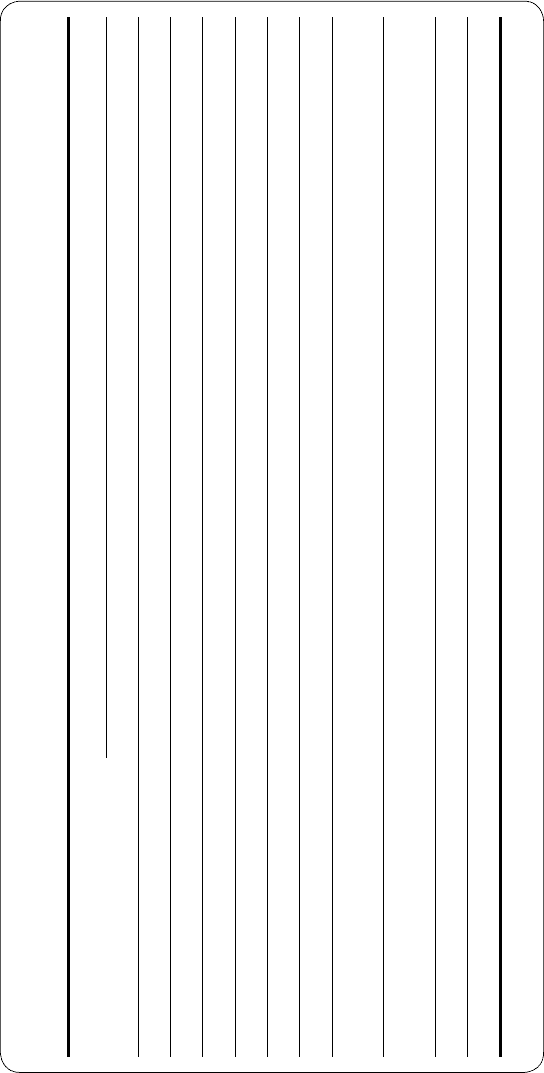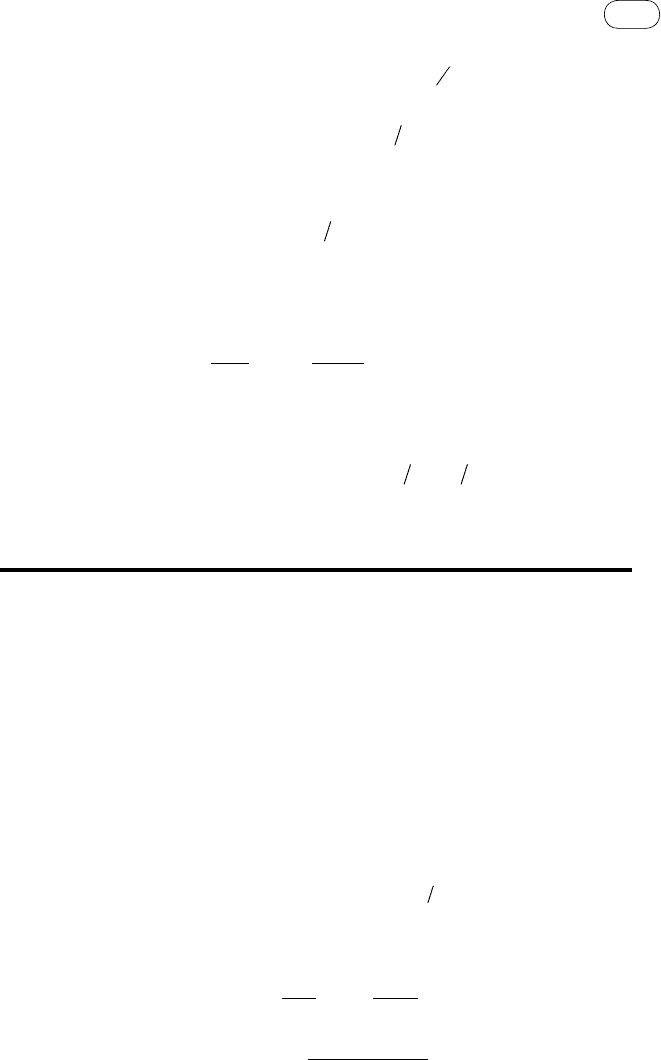Basu P. Biomass Gasification and Pyrolysis: Practical Design and Theory
Подождите немного. Документ загружается.


136
chapter
|
5 Gasification Theory and Modeling of Gasifiers
An entrained-flow gasifier may be viewed as a plug-flow reactor. Although
the gas is heated to the reactor temperature rapidly upon entering, solids heat
up less slowly along the reactor length because of the reactor’s large thermal
capacity and plug-flow nature, as shown in Figure 5.8. Some entrained-flow
reactors are modeled as stirred tank reactors because of the rapid mixing of
solids.
5.4 KInetIcs of GasIfIcatIon
Stoichiometric calculations can help determine the products of reaction. Not all
reactions are instantaneous and completely convert reactants into products.
Many of the chemical reactions discussed in the preceding sections proceed at
a finite rate and to a finite extent.
To what extent a reaction progresses is determined by its equilibrium state.
Its kinetic rates, on the other hand, determine how fast the reaction products
are formed and whether the reaction completes within the gasifier chamber. A
review of the basics of chemical equilibrium may be useful before discussing
its results.
5.4.1 chemical equilibrium
Let us consider the reaction:
nA mB pC qD
k
for
+ → + (5.27)
where n, m, p, and q are stoichiometric coefficients. The rate of this reaction, r
1
,
depends on C
A
and C
B
, the concentration of the reactants A and B, respectively.
r k C C
for A
n
B
m
1
= (5.28)
The reaction can also move in the opposite direction:
pC qD nA mB
k
back
+ → + (5.29)
The rate of this reaction, r
2
, is similarly written in terms of C
C
and C
D
, the
concentration of C and D, respectively:
r k C C
back
C
p
D
q
2
=
(5.30)
When the reaction begins, the concentration of the reactants A and B is high.
So the forward reaction rate r
1
is initially much higher than r
2
, the reverse reac-
tion rate, because the product concentrations are relatively low. The reaction
in this state is not in equilibrium, as r
1
> r
2
. As the reaction progresses, the
forward reaction increases the buildup of products C and D. This increases the
reverse reaction rate. Finally, a stage comes when the two rates are equal to
each other (r
1
= r
2
). This is the equilibrium state. At equilibrium,
There is no further change in the concentration of the reactants and the
products.

137
5.4 Kinetics of Gasification
The forward reaction rate is equal to the reverse reaction rate.
The Gibbs free energy of the system is at minimum.
The entropy of the system is at maximum.
Under equilibrium state, we have
r r
1 2
=
k C C k C C
for A
n
B
m
back
C
p
D
q
= (5.31)
Reaction Rate Constant
A rate constant, k
i
, is independent of the concentration of reactants but is
dependent on the reaction temperature, T. The temperature dependency of the
reaction rate constant is expressed in Arrhenius form as
k A
E
RT
= −
0
exp
(5.32)
where A
0
is a pre-exponential constant, R is the universal gas constant, and
E is the activation energy for the reaction.
The ratio of rate constants for the forward and reverse reactions is the equi-
librium constant, K
e
. From Eq. (5.31) we can write
K
k
k
C C
C C
e
for
back
C
p
D
q
A
n
B
q
= = (5.33)
The equilibrium constant, K
e
, depends on temperature but not on pressure. Table
5.4 gives values of equilibrium constants and heat of formation of some gas-
ification reactions (Probstein and Hicks, 2006, pp. 62–64).
TABLE 5.4 Equilibrium Constants and Heats of Formation for Five
Gasification Reactions
Reaction
Equilibrium Constant (log
10
K)
Heat of Formation
(kJ/mol)
298 K 1000 K 1500 K 1000 K 1500 K
C +
1
2
2
O
→ CO
24.065 10.483 8.507
−111.9 −116.1
C + O
2
→ CO
2
69.134 20.677 13.801
−394.5 −395.0
C + 2H
2
→ CH
4
8.906
−0.999 −2.590 −89.5 −94.0
2C + 2H
2
→ C
2
H
4
−11.940 −6.189 −5.551
38.7 33.2
H
2
+
1
2
2
O
→ H
2
O
40.073 10.070 5.733
−247.8 −250.5
Source: Data compiled from Probstein and Hicks, 2006, p. 64.

138
chapter
|
5 Gasification Theory and Modeling of Gasifiers
Gibbs Free Energy
Gibbs free energy, G, is an important thermodynamic function. Its change in
terms of a change in entropy, ΔS, and enthalpy, ΔH, is written as
∆ ∆ ∆
G H T S
= −
(5.34)
The change in enthalpy or entropy for a reaction system is computed by
finding the enthalpy or entropy changes of individual gases in the system. It is
explained in Example 5.2. An alternative approach uses the empirical equations
given by Probstein and Hicks (2006). It expresses the Gibbs function (Eq. 5.35)
and the enthalpy of formation (Eq. 5.36) in terms of temperature, T, the heat
of formation at the reference state at 1 atmosphere and 298 K, and a number
of empirical coefficients, a′, b′, and so forth.
∆ ∆G h a T T b T
c
T
d
T
e
T
f T′
= −
′
( )
−
′
−
′
−
′
+
′
+
,
ln
0
298
0 2 3 4
2 3
2
′′
+
′
f g T kJ mol
(5.35)
∆ ∆H h a T b T c T d T
e
T
f
f T′
= +
′
+
′
+
′
+
′
+
′
+
′
,
0
298
0 2 3 4
kJ mol
(5.36)
The values of the empirical coefficients for some common gases are given in
Table 5.5.
The equilibrium constant of a reaction occurring at a temperature T may be
known using the value of Gibbs free energy.
K
G
RT
e
= −
exp
∆
(5.37)
Here, ΔG is the standard Gibbs function of reaction or free energy change for
the reaction, R is the universal gas constant, and T is the gas temperature.
example 5.2
Find the equilibrium constant at 2000 K for the reaction
CO CO O
2
1
2
2
→ +
Solution
Enthalpy change is written by taking the values for it from the NIST-JANAF ther-
mochemical tables (Chase, 1998) for 2000
K:
∆ ∆ ∆ ∆H h h h h h h
f f f
= +
( )
+ +
( )
− +
( )
= − +
( )
0 0 0
2 2
1 110 527 56 744
CO O CO
mol , , JJ mol mol J m ol
mol J mol
+ +
( )
− − +
( )
=
1 2 0 59 175
1 393 522 91 439 277 88
,
, , , 77 J
The change in entropy, ΔS, is written in the same way as for taking the values of
entropy change from the NIST-JANAF tables (see list that follows on page 140).

TABLE 5.5 Heat of Combustion, Gibbs Free Energy, and Heat of Formation at 298 K, 1 Atm, and Empirical Coefficients
from Eqs. 5.35 and 5.36
Product
HHV
(kJ/mol)
Δ
f
G
298
(kJ/mol)
Δ
f
H
298
(kJ/mol)
Empirical Coefficients
a′ b′ c′ d′ e′ f′ g′
C 393.5 0 0
CO 283
−137.3 −110.5 5.619 × 10
−3
−1.19 × 10
−5
6.383 × 10
−9
−1.846 × 10
−12
−4.891 × 10
2
0.868
−6.131 × 10
−2
CO
2
0
−394.4 −393.5 −1.949 × 10
−2
3.122 × 10
−5
−2.448 × 10
−8
6.946 × 10
−12
−4.891 × 10
2
5.27
−0.1207
CH
4
890.3
−50.8 −74.8 −4.62 × 10
−2
1.13 × 10
−5
1.319 × 10
−8
−6.647 × 10
−12
−4.891 × 10
2
14.11 0.2234
C
2
H
4
1411 68.1 52.3
−7.281 × 10
−2
5.802 × 10
−5
−1.861 × 10
−8
5.648 × 10
−13
−9.782 × 10
2
20.32
−0.4076
CH
3
OH 763.9
−161.6 −201.2 −5.834 × 10
−2
2.07 × 10
−5
1.491 × 10
−8
−9.614 × 10
−12
−4.891 × 10
2
16.88
−0.2467
H
2
O
(steam)
0
−228.6 −241.8 −8.95 × 10
−3
−3.672 × 10
−6
5.209 × 10
−9
−1.478 × 10
−12
0 2.868
−0.0172
H
2
O
(water)
0
−237.2 −285.8
O
2
0 0 0
H
2
285.8 0 0
Source: Adapted from Probstein and Hicks, 2006, pp. 55, 61.

140
chapter
|
5 Gasification Theory and Modeling of Gasifiers
∆S S S S= × + × − ×
= ×
( )
+ ×
1 1
1 258 71 1 2 268 74
1
2
2 2
CO O CO
mol J mol K mol J mo. . ll K
mol J mol K
J K
( )
− ×
( )
=
1 309 29
83 79
.
.
From Eq. (5.34), the change in the Gibbs free energy can be written as
∆ ∆ ∆G H T S= −
= − ×
( )
=277 887 2 000 83 79 110 307. , . .kJ K J K kJ
The equilibrium constant is calculated using Eq. (5.37):
K e e
K
G
RT
2000
110 307
0 008314 2000
0 001315= = =
−
−
∗
( )
∆
.
.
. (5.38)
Kinetics of Gas–Solid Reactions
The rate of gasification of char is much slower than the rate of pyrolysis of the
biomass that produces the char. Thus, the volume of a gasifier is more depen-
dent on the rate of char gasification than on the rate of pyrolysis. The char
gasification reaction therefore plays a major role in the design and performance
of a gasifier.
Typical temperatures of the gasification zone in downdraft and fluidized-bed
reactors are in the range of 700 to 900 °C. The three most common gas–solid
reactions that occur in the char gasification zone are
Boudouard reaction R C CO CO: :1 2
2
+ →
( )
(5.39)
Water gas reaction R C H O CO H− + ↔ +
( )
: :2
2 2
(5.40)
Methanation reaction R C H CH: : .3 2
2 4
+ ↔
( )
(5.41)
The water–gas reaction, R2, is dominant in a steam gasifier. In the absence
of steam, when air or oxygen is the gasifying medium, the Boudouard reaction,
R1, is dominant. However, the steam gasification reaction rate is higher than
the Boudouard reaction rate.
Another important gasification reaction is the shift reaction, R9 (CO + H
2
O
↔ CO
2
+ H
2
), which takes place in the gas phase. It is discussed in the next
section. A popular form of the gas–solid char reaction, r, is the nth-order
expression:
r
X
dX
dt
A e P
m
E
RT
i
n
=
−
( )
=
−
−
1
1
0
1
s (5.42)
where X is the fractional carbon conversion, A
0
is the apparent pre-exponential
constant (1/s), E is the activation energy (kJ/mol), m is the reaction order with
respect to the carbon conversion, T is the temperature (K), and n is the reaction

141
5.4 Kinetics of Gasification
order with respect to the gas partial pressure, P
i
. The universal gas constant, R,
is 0.008314
kJ/mol.K.
Boudouard Reaction
Referring to the Boudouard reaction (R1) in Eq. (5.6), we can use the Lang-
muir–Hinshelwood rate, which takes into account CO inhibition (Cetin et al.,
2005) to express the apparent gasification reaction rate, r
b
:
r
k P
k k P k k P
b
b
b b b b
=
+
( )
+
( )
−
1
2 3 1 3
1
2
2
1
CO
CO CO
s
(5.43)
where P
CO
and
P
CO
2
are the partial pressure of CO and CO
2
, respectively, on
the char surface (bar). The rate constants, k
i
, are given in the form, A exp(−E/
RT) bar
−n
s
−n
, where A is the pre-exponential factor (bar
−n
.s
−n
). Barrio and Hustad
(2001) gave some values of the pre-exponential factor and the activation energy
for Birch wood (Table 5.6).
When the concentration of CO is relatively small, and when its inhibiting
effect is not to be taken into account, the kinetic rate of gasification by the
Boudouard reaction may be expressed by a simpler nth-order equation as
r A e P
b b
E
RT
n
=
−
−
CO
s
2
1
(5.44)
For the Boudouard reaction, the values of the activation energy, E, for
biomass char are typically in the range of 200 to 250 kJ/mol, and those of the
exponent, n, are in the range of 0.4 to 0.6 (Blasi, 2009). Typical values of
A, E, and n for birch, poplar, cotton, wheat straw, and spruce are given in
Table 5.7.
The reverse of the Boudouard reaction has a major implication, especially
in catalytic reactions, as it deposits carbon on its catalyst surfaces, thus deac-
tivating the catalyst.
2 172
2
CO CO C kJ mol→ + − (5.45)
TABLE 5.6 Activation Energy and Pre-Exponential Factors for Birch Char
Using the Langmuir-Hinshelwood Rate Constants for CO
2
Gasification
Langmuir-Hinshelwood
Rate Constants (s
−1
bar
−1
)
Activation Energy,
E (kJ/mol)
Pre-Exponential Actor,
A (s
−1
bar
−1
)
k
b1
165
1.3 × 10
5
k
b2
20.8 0.36
k
b3
236
3.23 × 10
7
Source: Adapted from Barrio and Hustad, 2001.

142
chapter
|
5 Gasification Theory and Modeling of Gasifiers
The preceding reaction becomes thermodynamically feasible when (
P P
CO CO
2
2
)
is much greater than that of the equilibrium constant of the Boudouard reaction
(Littlewood, 1977).
Water–Gas Reaction
Referring to the water–gas reaction, the kinetic rate, r
w
, may also be written in
Langmuir-Hinshelwood form to consider the inhibiting effect of hydrogen and
other complexes (Blasi, 2009).
r
k P
k k P k k P
w
w
w w w w
=
+
( )
+
( )
−
1
1 3 2 3
1
2
2 2
1
H O
H O H
s
(5.46)
where P
i
is the partial pressure of gas i in bars.
Typical rate constants according to Barrio et al. (2001) for beech wood are
k RT
w1
7 1 1
2 0 10 199= × −
( )
− −
. e xp ; bar s
k RT
w2
6 1 1
1 8 10 146= × −
( )
− −
. exp ; bar s
k RT
w3
7 1 1
8 4 10 225= × −
( )
− −
. exp bar s
Most kinetic analysis, however, uses a simpler nth-order expression for the
reaction rate:
r A e P
w w
E
RT
n
=
−
−
H O
s
2
1
(5.47)
Typical values for the activation energy, E, for steam gasification of char for
some biomass types are given in Table 5.8.
TABLE 5.7 Typical Values for Activation Energy, Pre-Exponential Factor,
and Reaction Order for Char in the Boudouard Reaction
Char
Origin
Activation
Energy, E
(kJ/mol)
Pre-Exponential
Factor, A
(s
−1
bar
−1
)
Reaction
Order, n (−) Reference
Birch 215
3.1 × 10
6
s
−1
bar
−0.38
0.38 Barrio and Hustad,
2001
Dry poplar 109.5
153.5
s
−1
bar
−1
1.2 Barrio and Hustad,
2001
Cotton
wood
196
4.85 × 10
8
s
−1
0.6 DeGroot and
Shafizadeh, 1984
Douglas fir 221
19.67 × 10
8
s
−1
0.6 DeGroot and
Shafizadeh, 1984
Wheat straw 205.6
5.81 × 10
6
s
−1
0.59 Risnes et al., 2001
Spruce 220
21.16 × 10
6
s
−1
0.36 Risnes et al., 2001

143
5.4 Kinetics of Gasification
TABLE 5.8 Activation Energy, Pre-Exponential Factor, and Reaction Order
for Char for the Water–Gas Reaction
Char Origin
Activation
Energy, E
(kJ/mol)
Pre-Exponential
Factor, A
w
(s
−1
bar
−1
)
Reaction
Order, n (−) Reference
Birch 237
2.62 × 10
8
s
−1
bar
−n
0.57 Barrio et al.,
2001
Beech 211
0.171 × 10
8
s
−1
bar
−n
0.51 Barrio et al.,
2001
Wood 198
0.123 × 10
8
s
−1
atm
−n
0.75 Hemati and
Laguerie, 1988
Various
biomass
180–200 0.04–1.0 Blasi, 2009
Hydrogasification Reaction (Methanation)
The hydrogasification reaction is as follows:
C H CH+ ⇔2
2 4
(5.48)
With freshly devolatilized char, this reaction progresses rapidly, but graphitiza-
tion of carbon soon causes the rate to drop to a low value. The reaction involves
volume increase, and so pressure has a positive influence on it. High pressure
and rapid heating help this reaction. Wang and Kinoshita (1993) measured the
rate of this reaction and obtained values of A = 4.189 × 10
−3
s
−1
and E =
19.21
kJ/mol.
Steam Reforming of Hydrocarbon
For production of syngas (CO, H
2
) direct reforming of hydrocarbon is an option.
Here, a mixture of hydrocarbon and steam is passed over a nickel-based catalyst
at 700 to 900 °C. The final composition of the product gas depends on the fol-
lowing factors (Littlewood, 1977):
H/C ratio of the feed
Steam/carbon (S/C) ratio
Reaction temperature
Operating pressure
The mixture of CO and H
2
produced can be subsequently synthesized into
required liquid fuels or chemical feedstock. The reactions may be described as
C H H O CH CO
n m
m n m n m n
+
−
⇔
+
+
−4
4
4
8
4
8
2 4 2
(5.49)

144
chapter
|
5 Gasification Theory and Modeling of Gasifiers
CH H O CO H
4 2 2
3+ ⇔ + (5.50)
CO H O CO H+ ⇔ +
2 2 2
(5.51)
The first reaction (Eq. 5.48) is favorable at high pressure, as it involves
an increase in volume in the forward direction. The equilibrium constant of the
first reaction increases with temperature while that of the third reaction (Eq.
5.51), which is also known as the shift reaction, decreases.
Kinetics of Gas-Phase Reactions
Several gas-phase reactions play an important role in gasification. Among them,
the shift reaction (R9), which converts carbon monoxide into hydrogen, is most
important.
R CO H O CO H kJ mol9 41 1
2 2 2
: .+ → + −
k
for
(5.52)
This reaction is mildly exothermic. Since there is no volume change, it is rela-
tively insensitive to changes in pressure.
The equilibrium yield of the shift reaction decreases slowly with tempera-
ture. For a favorable yield, the reaction should be conducted at low temperature,
but then the reaction rate will be slow. For an optimum rate, we need catalysts.
Below 400 °C, a chromium-promoted iron formulation catalyst (Fe
2
O
3
− Cr
2
O
3
)
may be used (Littlewood, 1977).
Other gas-phase reactions include CO combustion, which provides heat to
the endothermic gasification reactions:
R CO O CO kJ mol6 1 2 284
2 2
: + → −
k
for
(5.53)
These homogeneous reactions are reversible. The rate of forward reactions is
given by the rate coefficients of Table 5.9.
TABLE 5.9 Forward Reaction Rates, r, for Gas-Phase Homogeneous
Reactions
Reaction Reaction Rate (r)
Heat of
Formation
(m
3
.mol
−1
.s
−1
) Reference
H
2
+
1
2
2
O
→ H
2
O
K C C
H O2
1 5
2
.
51.8 T
1.5
exp (−3420/T)
Vilienskii and
Hezmalian, 1978
CO +
1
2
2
O
→ CO
2
K C C C
CO
O
H O
2
0 5
2
0 5. .
2.238 × 10
12
exp (−167.47/RT)
Westbrook and
Dryer, 1981
CO + H
2
O → CO
2
+ H
2
K C C
CO H O
2
0.2778
exp (−12.56/RT)
Petersen and
Werther, 2005
Note: Here, the gas constant, R, is in kJ/mol.K.

145
5.4 Kinetics of Gasification
For the backward CO oxidation reaction (
CO O CO+ ←
1
2
2 2
k
back
), the
rate, k
back
, is given by Westbrook and Dryer (1981) as
k RT
back
= × −
( )
5 18 10 167 47
8
2
. exp . C
CO
(5.54)
For the reverse of the shift reaction (
CO H O CO H+ ← +
2 2 2
k
back
), the rate is
given as
k RT
back
= −
( )
−
126 2 47 29
2 2
3
. exp . .C C mol m
CO H
(5.55)
If the forward rate constant is known, then the backward reaction rate, k
back
,
can be determined using the equilibrium constant from the Gibbs free energy
equation:
K
k
k
G
RT
equilibrium
for
back
= =
−
exp
∆
0
1at atm pressure (5.56)
ΔG
0
for the shift reaction may be calculated (see Callaghan, 2006) from a
simple correlation of
∆G T T
0
32 197 0 031 1774 7= − + −
( )
. . . , kJ mol (5.57)
where T is in K.
example 5.3
For shift reaction CO + H
2
O → CO
2
+ H
2
, the equilibrium constant at 625 K is
given as 20 and that at 1667
K as 0.368. Assume that the reaction begins with 1
mole of CO, 1 mole of H
2
O, and 1 mole of nitrogen. Find:
The equilibrium constant at 1100 K and 1 atm.
The equilibrium mole fraction of carbon dioxide.
Whether the reaction is endothermic or exothermic.
If pressure is increased to 100 atm, the impact of the equilibrium constant at
1100
K.
Solution
p
art
(a). For the shift reaction, the Gibbs free energy at a certain temperature can
be calculated from Eq. (5.57):
∆G T
0
32 197 0 031 1774 7= − + −
( )
. . .T
at 1100
K, ΔG
0
= 0.2896 kJ/mol.
The equilibrium constant can be calculated from Eq. (5.56):
K
k
k
G
RT
equilibrium
for
back
= =
−
exp
∆
0
K
equilibrium
=
−
∗
exp
.
.
0 2896
0 008314 1100
K
equilibrium
= 0 9688.
